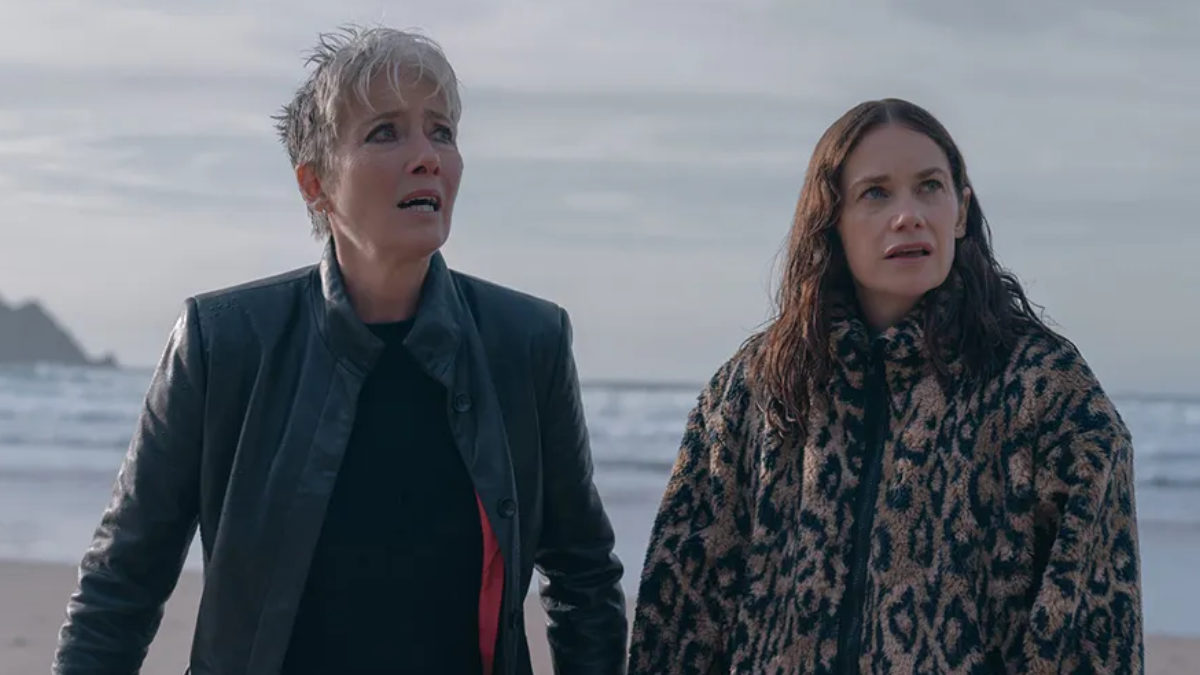In the quiet suburbs of Oxford, nothing stays buried forever. Down Cemetery Road arrives on Apple TV+ on October 29, 2025, as a thriller that begins with the kind of shock so sudden it rips open the façade of normal life. A house explodes; a girl vanishes. What starts as a local tragedy spirals into something much darker, as neighbors, investigators, and long-buried truths collide.
At its core is Sarah Tucker (Ruth Wilson), a woman haunted by the disappearance of a child, and compelled to do what many would avoid. She pulls in Zoë Boehm (Emma Thompson), a private investigator whose own life is more complicated than it seems, and together they unravel a conspiracy that forces them to question who is truly alive, and who is already dead.
Based on Mick Herron’s novel and adapted by Morwenna Banks, Down Cemetery Road is not interested in easy answers. From the first episode, the series teases that death is not always permanent, people once declared dead may still be walking among us, and the living may be closer to dying than they know.
This is more than a mystery plot; it is a meditation on identity, memory, and the refusal of the past to remain silent. The suburban calm of South Oxford becomes a thin veneer, masking a network of secrets, lies, and shifting allegiances.
The casting is deliberate and potent. Emma Thompson, rarely seen in a lead TV role, brings to Zoë a weight of gravitas, skepticism, and hidden vulnerabilities. Ruth Wilson, known for her ability to portray obsession, pain, and complexity, makes Sarah a character whose desperation
is deeply believable. Together, they form a duo that feels real, flawed, and compellingly human, not cartoonish detectives.
Behind the scenes, the series is produced by 60Forty Films, with Natalie Bailey as lead director, and Mick Herron, Banks, Thompson, and others as executive producers. Filming took place across England, Bristol, Somerset, and more grounding the show in real locations that heightened its atmosphere.
One of the more unsettling twists of Down Cemetery Road is how it challenges the boundary between life and death. Characters labeled “gone” reappear; others thought safe vanish. The conspiracy at the heart of the show has tendrils that reach into politics, science, and the human psyche. Secrets about identity, resurrection, memory, and mortality intertwine. The show asks: who are you if your life is built on lies? And if death is reversible, what does that do to grief, to accountability, to trust?
The pacing is deliberate. The first two episodes drop immediately on release, and then the show moves weekly, tightening tension, revealing layers, and refusing to let the audience get comfortable. The slow drip of revelations invites speculation, conspiracy, doubt. Every frame seems poised to reveal more than just clues, it reveals character. Who has betrayed whom? Who is hiding under which alias? Which deaths are real, and which are illusions?
By the time the credits roll, Down Cemetery Road is unlikely to leave you satisfied with a single explanation. That’s the point. The show lives in its uncertainties. It works because it doesn’t pretend to deliver moral neatness; instead, it lets shadows persist. Some mysteries will remain, some horrors unexplained. But Sarah, Zoë, and the audience emerge with more questions than answers, and that lingering doubt is its power.
This is thriller storytelling not for the faint of heart, but for those who like their suspense layered, their characters haunted, and their truths slippery. When Down Cemetery Road premieres, it promises to be more than just a missing girl case. It’s a story about memory, identity, and the ghosts that refuse to stay buried.

